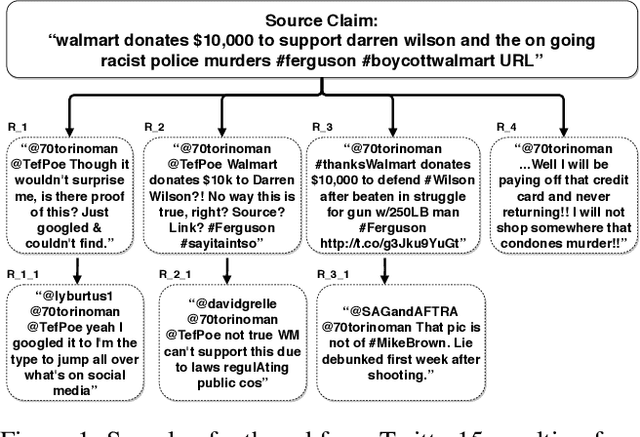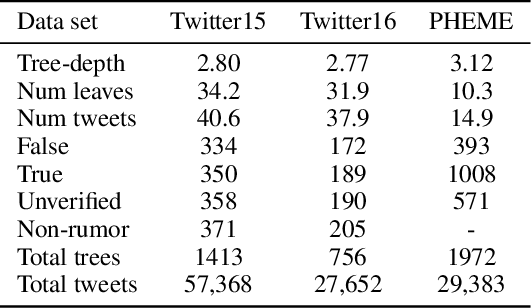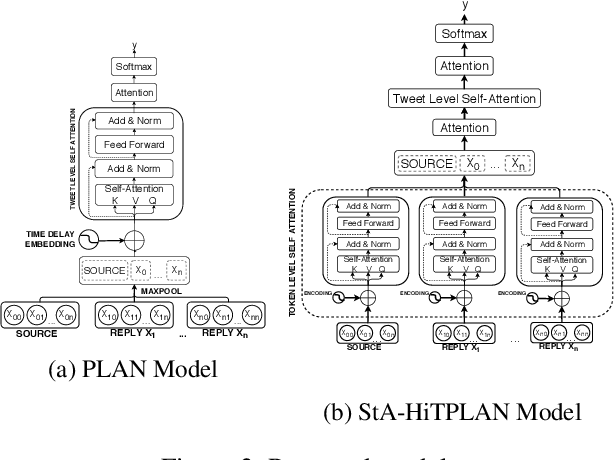Ling Min Serena Khoo
Interpretable Rumor Detection in Microblogs by Attending to User Interactions
Jan 29, 2020



Abstract:We address rumor detection by learning to differentiate between the community's response to real and fake claims in microblogs. Existing state-of-the-art models are based on tree models that model conversational trees. However, in social media, a user posting a reply might be replying to the entire thread rather than to a specific user. We propose a post-level attention model (PLAN) to model long distance interactions between tweets with the multi-head attention mechanism in a transformer network. We investigated variants of this model: (1) a structure aware self-attention model (StA-PLAN) that incorporates tree structure information in the transformer network, and (2) a hierarchical token and post-level attention model (StA-HiTPLAN) that learns a sentence representation with token-level self-attention. To the best of our knowledge, we are the first to evaluate our models on two rumor detection data sets: the PHEME data set as well as the Twitter15 and Twitter16 data sets. We show that our best models outperform current state-of-the-art models for both data sets. Moreover, the attention mechanism allows us to explain rumor detection predictions at both token-level and post-level.
 Add to Chrome
Add to Chrome Add to Firefox
Add to Firefox Add to Edge
Add to Edge